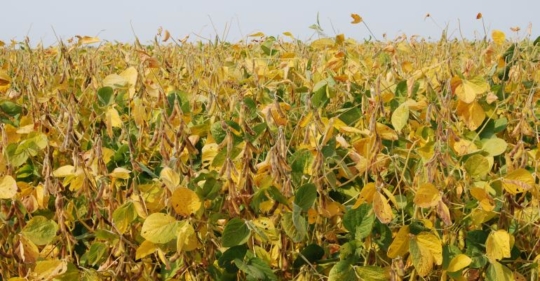Explore our blog featuring articles about farming and irrigation tips and tricks!
How Fast Do Soybeans Dry Down In The Field?

By: Rod Swoboda
How fast do soybeans dry down during the preharvest period? To get a better answer to that question, Iowa State University scientists conducted an in-the-field study in central Iowa. They looked at how projected soybean drydown can help farmers schedule their harvest plans.
Soybean fields this fall are maturing across Iowa with minimal delay compared to 2016, when maturity was slower due to cool temperatures, notes ISU Extension agronomist Mark Licht. However, he says you need to keep in mind that soybeans are sensitive to day length. And that sensitivity speeds up the crop’s development toward physiological maturity.
Licht, along with ISU colleague Sotirios Archontoulis, an assistant professor of integrated cropping systems in the department of agronomy at ISU, provide the following information and observations.
How to measure soybean drydown rate
During this time as soybeans are maturing for harvest, senescence or leaf drop is occurring and carbohydrates are being converted to oils in the seeds in the pods. Soybean seed moisture changes very little and remains near 60% during the degreening period. As the pods turn to a mature color at the beginning of maturity stage (R7), seed dry matter accumulation is complete and seed moisture rapidly decreases.
To quantify the rate of soybean drydown (percent of seed moisture decrease per day until it reaches a constant seed moisture) and to investigate how planting date and maturity group affect the drydown rate, ISU researchers conducted a field experiment recently near Ames in central Iowa. The experiment had four planting dates and four maturity groups over three years.
Stay up to date on all T-L news and get alerts on special pricing!


